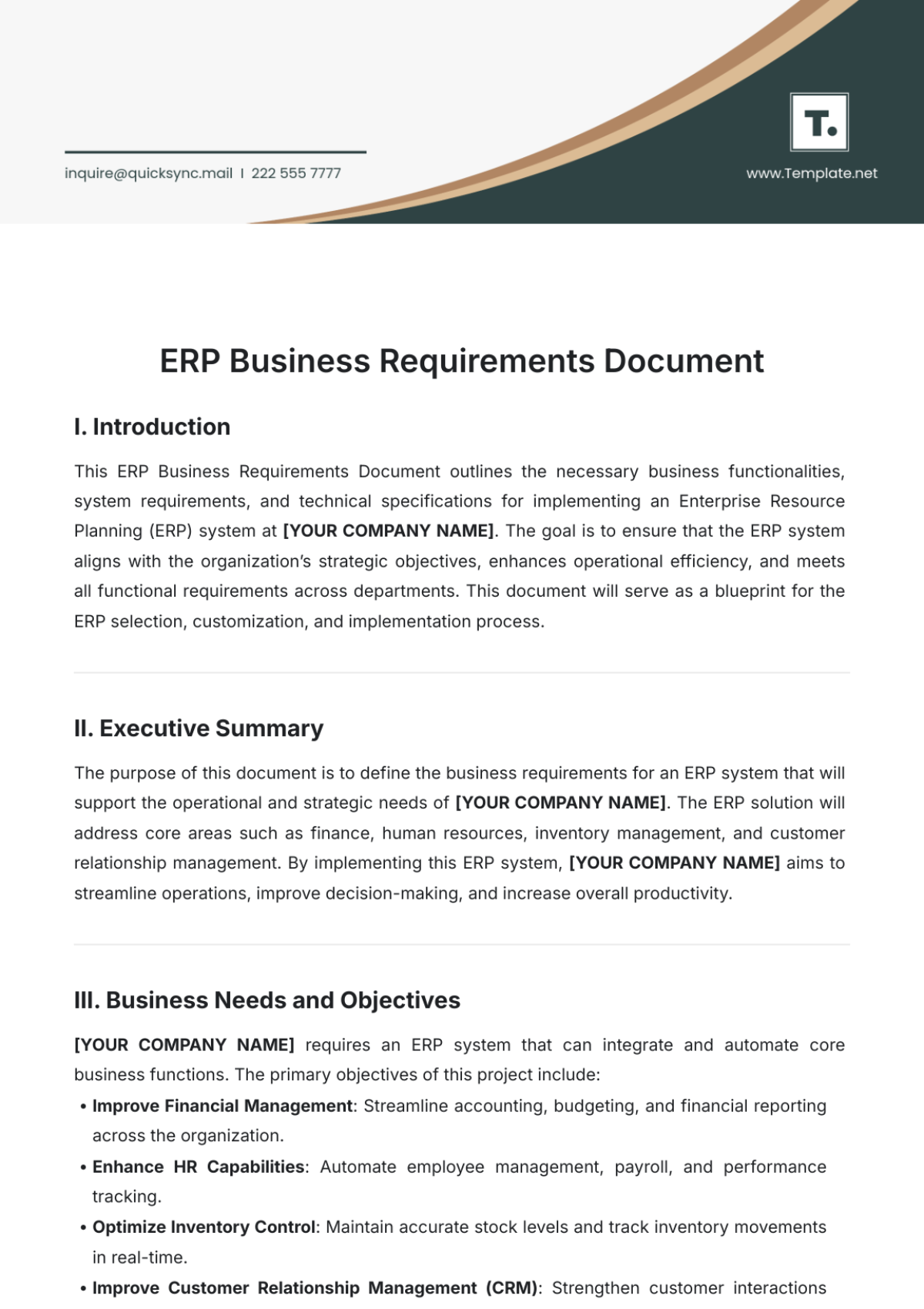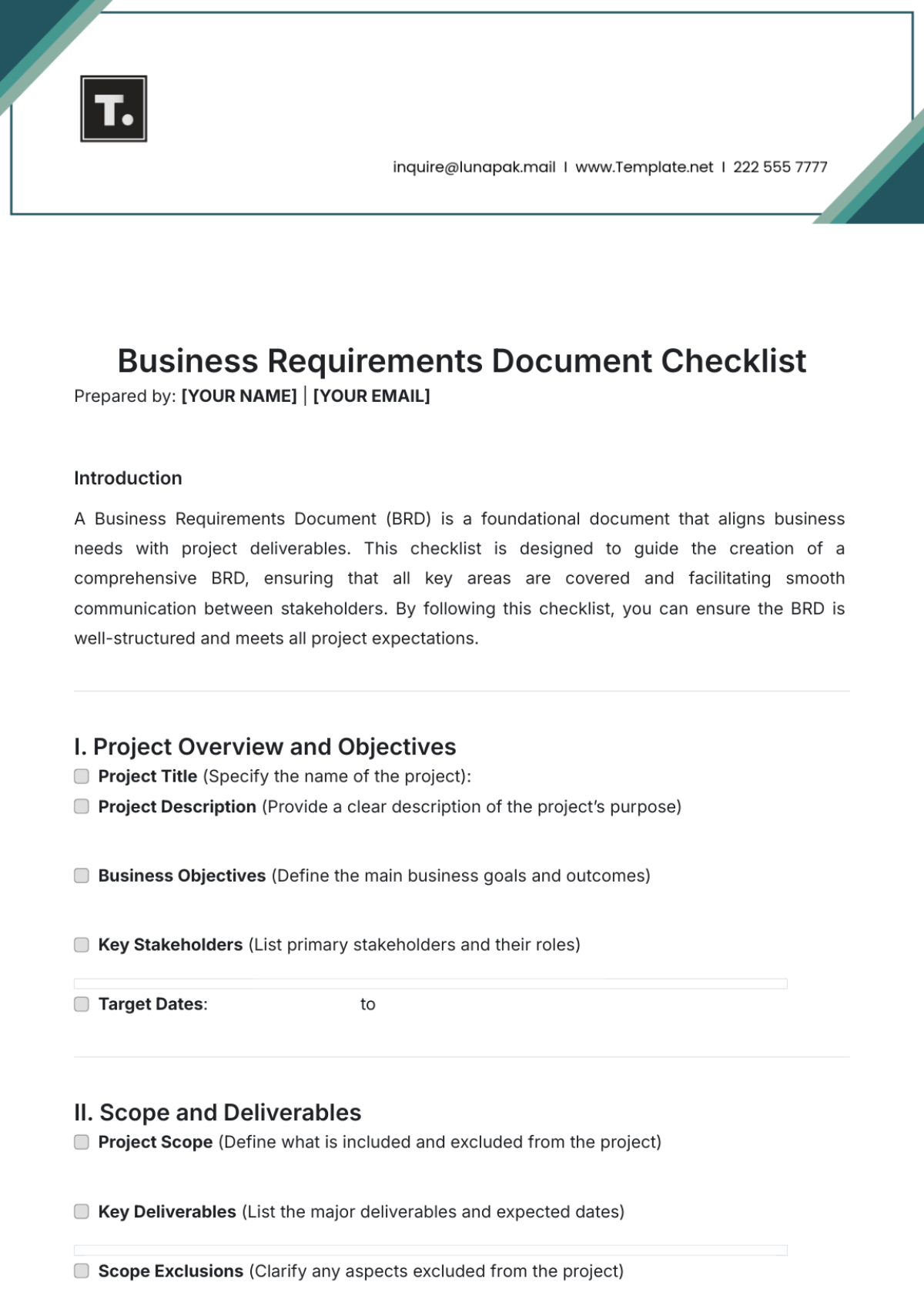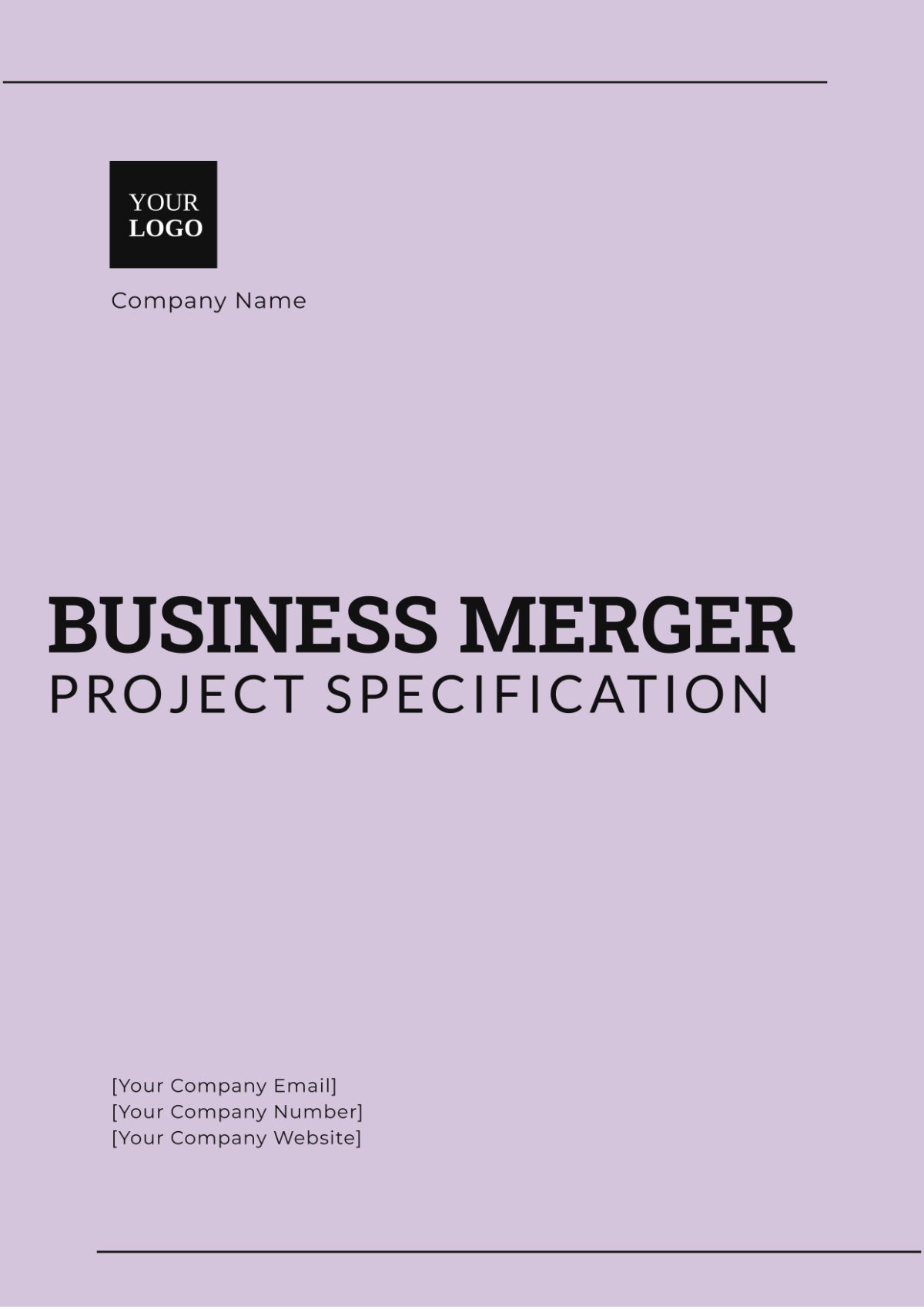High-Level Requirements Document
I. Overview
Project Title: Development of New Customer Relationship Management (CRM) System
Prepared By: [Your Name]
Date: August 29, 2050
Company: [Your Company Name]
Company Address: [Your Company Address]
Email: [Your Company Email]
II. Objectives
Objective 1:
To provide a comprehensive solution for managing customer relationships, including tracking interactions, sales, and support requests.
Objective 2:
To improve data accuracy and accessibility through a centralized database that integrates seamlessly with existing business systems.
Objective 3:
To enhance user experience with an intuitive interface and customizable features that meet diverse organizational needs.
III. Key Features
A. Customer Management
Feature 1:
Customer Profiles: Detailed records of customer information including contact details, interaction history, and preferences.
Feature 2:
Interaction Tracking: Automated logging of all customer interactions including emails, calls, and meetings.
B. Sales Management
Feature 1:
Lead Tracking: Tools for tracking and managing sales leads through the sales pipeline.
Feature 2:
Sales Forecasting: Analytical tools to predict future sales trends based on historical data and current pipeline status.
C. Data Management
Feature 1:
Centralized Database: A single repository for all customer and sales data, ensuring consistency and reliability.
Feature 2:
Data Security: Advanced security protocols to protect sensitive customer and company data.
IV. Technical Requirements
A. System Architecture
Requirement 1:
Scalability: The system should support scaling up to accommodate increased user load and data volume.
Requirement 2:
Integration: Must integrate with existing ERP and marketing systems to ensure data consistency.
B. Performance
Requirement 1:
Response Time: The system should have an average response time of less than 2 seconds for all user actions.
Requirement 2:
Uptime: The system should achieve 99.9% uptime over the course of a year.
C. Compliance
Requirement 1:
Regulatory Compliance: The system must comply with relevant data protection regulations such as GDPR and CCPA.
Requirement 2:
Audit Trails: Maintain detailed audit trails of user actions for compliance and security purposes.
V. Implementation Plan
A. Project Phases
Phase | Description | Timeline |
|---|---|---|
Planning | Requirements gathering and analysis | 1 Month |
Design | System design and architecture | 2 Months |
Development | Coding and system build | 4 Months |
Testing | Quality assurance and testing | 2 Months |
Deployment | System rollout and user training | 1 Month |
B. Risk Management
Risk 1:
Description: Potential development delays due to technical challenges.
Mitigation Strategy: Regular progress reviews and contingency planning.
Risk 2:
Description: User resistance to new system adoption.
Mitigation Strategy: Comprehensive training and support during rollout.
VI. Stakeholders
Primary Stakeholders:
Sales Team: Users who will interact with the CRM daily.
Customer Support: Staff responsible for customer interactions and support.
Secondary Stakeholders:
IT Department: Responsible for system maintenance and integration.
Management: Oversight and approval of project milestones and deliverables.






































